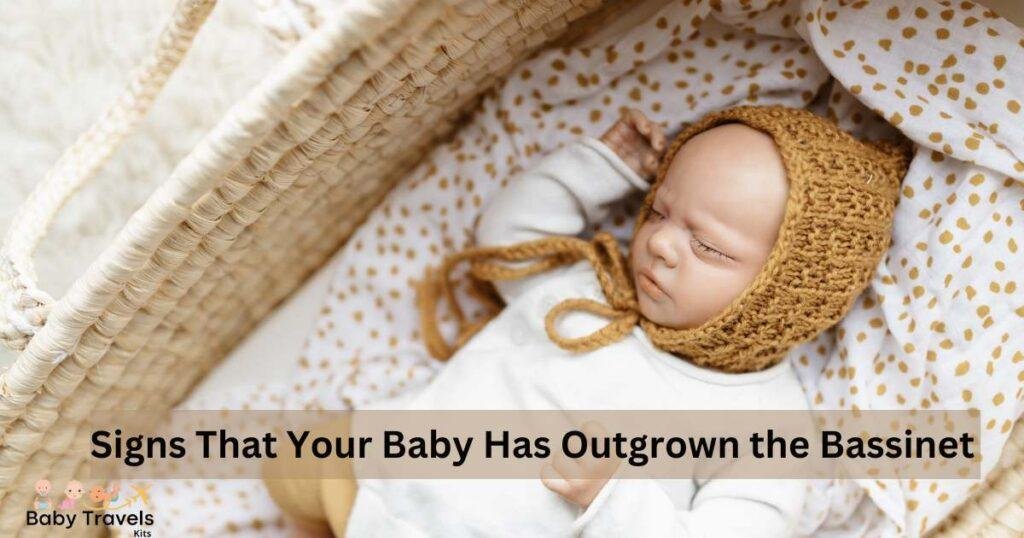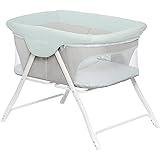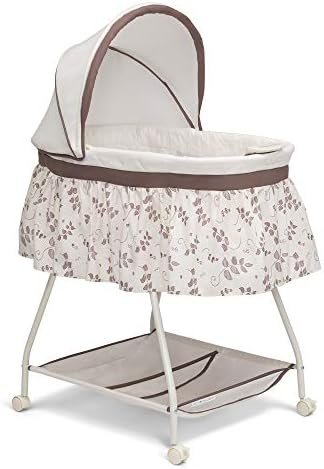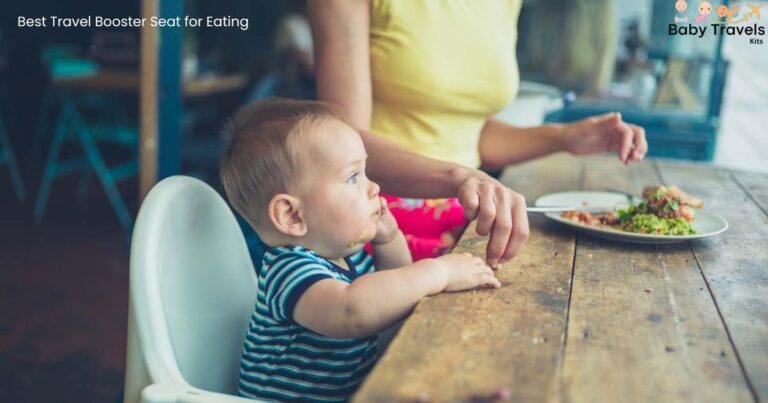Finding the right sleeping arrangement for your growing baby is an important milestone for both you and your little one. As your baby outgrows the bassinet and isn’t quite ready for the crib, it’s important to create a safe and comfortable sleep environment to ensure a smooth transition. In this next section, we’ll explore some practical tips and strategies to help you navigate this stage with confidence and ease.
Bassinet to Crib Transition Guide
This guide will provide you with valuable tips and advice to help smoothen this transition for your little one.
Choosing the Right Time to Transition from Bassinet to Crib
It’s important to consider your baby’s developmental stage and readiness for the transition. Signs that your baby is ready for the move to a crib include outgrowing the bassinet, increased mobility such as rolling over or trying to sit up, and showing signs of being uncomfortable or restricted in the bassinet.
Additionally, if your baby is consistently sleeping through the night in the bassinet, it may be a good indication that they are ready for the larger space and increased freedom of movement offered by a crib. Once you’ve identified these signs, you can start preparing for the transition.
Learn more: Top 8 Best Baby Travel Crib
Understanding Your Baby’s Growth and Sleep Needs
Understanding your baby’s growth and sleep needs is crucial in ensuring a successful transition from a bassinet to a crib. As babies grow, their sleep patterns and needs evolve as well. It’s important to assess whether your baby is comfortable and safe in the crib and has enough space to move around. Additionally, consider whether your baby still needs the cozy and confined space of a bassinet or is ready for the greater independence and freedom that a crib offers.
Gradual Adjustment and Familiarization
Once you’ve chosen the right time to transition and understood your baby’s needs, it’s essential to make the process gradual. Start by having your baby take naps in the crib to familiarize them with the new sleeping environment. This allows your baby to gradually adjust to the crib and feel comfortable in it before making it their primary sleeping space.

Creating a Comforting Environment
To ease the transition, you can make the crib as comforting as the bassinet. Use familiar bedding and blankets, and consider utilizing white noise or other soothing sounds to create a similar sleep environment. This can help your baby associate the crib with the same tranquility and comfort they experienced in the bassinet.
Reassurance and Consistency
During the transition, providing reassurance and maintaining consistency in your baby’s bedtime routine is essential. Consistent sleep schedules and familiar routines can help your baby feel secure and comfortable in the new sleeping arrangement.
By understanding your baby’s readiness, gradually familiarizing them with the crib, creating a comforting environment, and maintaining consistency, you can successfully transition your baby from a bassinet to a crib. However, it’s important to note that every baby is unique and may have different readiness cues. Therefore, pay attention to your baby’s individual needs and cues throughout the transition process to ensure a smooth and comfortable adjustment. Taking these steps will help ensure a smooth transition for your baby from the bassinet to the crib, allowing them to feel safe, comfortable, and secure.
Signs That Your Baby Has Outgrown the Bassinet
As your baby grows, there are certain signs that indicate they have outgrown the bassinet. These signs include your baby being able to push up on their hands and knees, exceeding the weight limit for the bassinet, showing signs of trying to climb out, or simply appearing too cramped or uncomfortable in the limited space provided by the bassinet.
Assessing the Safety of the Crib Environment
Before fully transitioning your baby to the crib, it’s crucial to assess the safety of the crib environment. Ensure that the crib meets current safety standards, with slats that are the appropriate distance apart, a firm mattress, and secure bedding that fits snugly. This will provide a safe and comfortable sleeping space for your baby as they make the transition.

Encouraging Independent Sleep
As your baby adjusts to the crib, it’s important to encourage independent sleep. This means giving your baby the opportunity to self-soothe and fall asleep on their own. While it’s natural to provide comfort and reassurance, allowing your baby to learn how to settle themselves to sleep is an important skill that will benefit them in the long run.
Establishing a Bedtime Routine
Establishing a consistent bedtime routine can aid in the transition to the crib. A predictable routine signals to your baby that it’s time to wind down and prepare for sleep. This can include activities such as a warm bath, reading a bedtime story, or gentle music, all of which can help your baby associate these cues with bedtime.
Monitoring Your Baby’s Adjustment
Throughout the transition, it’s important to monitor your baby’s adjustment to the crib. Pay attention to their sleep patterns, any signs of discomfort, and overall behavior during bedtime. Being observant will allow you to make any necessary adjustments and address any challenges that may arise during this period of change.
The transition from a bassinet to a crib is a significant event for both you and your baby. By being attentive to your baby’s cues, creating a safe and comforting environment, and maintaining consistency in your approach, you can facilitate a smooth and successful move to the crib. Always remember that each baby is unique, so staying attuned to your baby’s individual needs and providing the necessary support throughout the transition will ensure a positive experience for both you and your little one.
Options for Babies Who Aren’t Ready for a Crib
If your baby is too big for a bassinet but not quite ready for a crib, there are alternative options to consider. One option is a co-sleeper or bedside sleeper. A co-sleeper or bedside sleeper is a separate sleeping surface that attaches to the side of your bed. This allows your baby to be close to you, providing a sense of security and easy access for nighttime feedings or soothing.

Creating a Safe Sleep Environment for Your Growing Baby
Creating a safe sleep environment for your growing baby is crucial. Consider the following tips to ensure your baby’s safety and comfort as they transition to a crib:
Checking the Crib for Safety
Before making the full transition, ensure the crib meets safety standards by checking for any loose screws, sharp edges, or potential hazards. Make sure the mattress fits snugly with no gaps and that there are no toys or pillows that could pose a suffocation risk.
Introducing a Lovey or Comfort Object
Introducing a small, soft lovey or comfort object can provide reassurance for your baby as they adjust to the crib. It’s best to choose a lightweight and breathable object and ensure that it is placed away from the face to reduce the risk of suffocation.
Implementing Safe Sleep Practices
Follow safe sleep practices recommended by pediatricians, such as placing your baby on their back to sleep, avoiding loose bedding, and keeping the crib free of any potential choking or entrapment hazards.
Remaining Attentive to Your Baby’s Needs
Throughout the transition and beyond, it’s important to remain attentive to your baby’s cues and adjust as needed. Every baby is unique, so paying attention to their individual needs and providing the necessary support will ensure a positive sleep environment.
Remember, the transition from bassinet to crib is a significant milestone for your baby. By taking the necessary steps to ensure a safe and comfortable sleeping environment, you can support your baby’s growth and development while providing peace of mind for yourself as a parent.
The Intermediate Steps Between a Bassinet and Crib
Choosing a Mini Crib
If your baby has outgrown the bassinet but you’re not ready to transition to a standard crib just yet, a mini crib could be a suitable intermediate option. A mini crib is smaller than a standard crib but larger than a bassinet, making it a practical choice for babies who need a bit more space to stretch out and move around.

Positioning the Mini Crib
When setting up the mini crib, consider placing it in your bedroom or the nursery, ensuring it’s in a safe and convenient location. As with the bassinet and standard crib, it’s essential to maintain a safe sleep environment by avoiding any potential hazards and ensuring the crib meets current safety standards.
Following Safe Sleep Guidelines for Mini Cribs
While using a mini crib, it’s important to adhere to safe sleep guidelines just as you would with a standard crib. This includes using a firm mattress that fits snugly, keeping the sleep space free of loose bedding, and avoiding the use of pillows or soft items that could pose a suffocation risk.

Transitioning to a Standard Crib
As your baby continues to grow, the transition to a standard crib will eventually become necessary. Keep an eye on your baby’s physical developmental milestones and signs of outgrowing the mini crib to determine when they’re ready for the move. Additionally, consider the baby’s comfort and the practicality of the mini crib as they become more active and require additional space.
Finally,
The journey from a bassinet to a crib encompasses various stages, including the potential use of a mini crib as an intermediate sleeping option. By selecting the right sleeping environment for your baby at each stage and following safe sleep practices, you can ensure their comfort and safety while supporting their development. As your baby progresses through these transitions, your attentiveness and thoughtful consideration will continue to play a crucial role in creating a nurturing sleep space.
Maximizing Baby’s Comfort During the Transition Period
Maximizing Baby’s Comfort During the Transition Period can be achieved by providing familiar and soothing elements in the new sleeping environment. This can include using familiar bedding or blankets, playing soothing music or white noise, and maintaining a consistent bedtime routine.
Additionally, ensuring the room temperature is comfortable and appropriate for your baby’s needs is essential. Consider using a room thermometer to monitor and adjust the temperature as needed. It’s important to note that every baby is different and may have individual needs and preferences when it comes to sleep.
Expert Tips for Smoothing the Transition to a Crib
Establishing a Transitional Routine
To help your baby adjust to the new sleeping environment, it’s beneficial to establish a transitional routine that signals the approaching bedtime. Incorporating activities such as a warm bath, gentle music, or a calming bedtime story can create a sense of familiarity and relaxation, preparing your baby for a restful night’s sleep in the new crib.
Introducing Transitional Objects
Introducing transitional objects, such as a soft blanket or a favorite stuffed animal, can provide comfort and reassurance to your baby during the transition period. These objects can serve as sources of familiarity and security, helping your baby feel more at ease in the new sleeping environment.
Gradual Transition
If your baby is showing signs of resistance to the crib, consider implementing a gradual transition. This could involve initially placing the crib in the same room as the bassinet or mini crib, allowing your baby to become accustomed to the new sleeping space while still being in a familiar environment. Over time, gradually move the crib to its intended location, giving your baby the opportunity to adjust at their own pace.
Providing Comforting Scents
Infusing the crib with comforting scents, such as a subtle lavender or chamomile aroma, can contribute to a soothing and calming atmosphere, promoting relaxation and facilitating your baby’s transition to the new sleeping space.
Seeking Support
Don’t hesitate to seek support and advice from healthcare professionals, pediatricians, or experienced parents if you encounter challenges during the transition period. They can offer valuable insights and guidance tailored to your baby’s specific needs, ensuring a smoother and more comfortable transition to the crib.
Remember to remain patient and understanding as your baby adapts to the new sleeping environment. Each baby’s adjustment process is unique, and with your attentiveness and patience, you can help facilitate a positive and successful transition to the crib.
Safety Considerations for Your Baby’s Sleep Spaces
Ensuring a safe sleep environment for your baby is paramount as they transition to the crib. Here are some key safety considerations to keep in mind:
Crib Safety Standards
When transitioning to a crib, it’s crucial to ensure that the crib meets current safety standards. This includes checking for any recalls, ensuring proper assembly, and verifying that the crib’s slats are the appropriate distance apart to prevent potential entrapment.
Safe Bedding Practices
Using a fitted sheet that fits snugly on the crib mattress is essential to prevent entanglement or suffocation hazards. Avoid placing any loose bedding, such as blankets or pillows, in the crib, and opt for sleep sacks or wearable blankets for added warmth.
Temperature Regulation
Maintaining a comfortable room temperature is important for your baby’s sleep environment. Dressing your baby in appropriate sleep attire and monitoring the room temperature with a thermometer can help ensure they are neither too hot nor too cold during sleep.
Eliminating Suffocation Risks
Inspect the crib and its surroundings for any potential suffocation risks, such as cords, plastic packaging, or overly soft bedding. Keeping the sleep space clear of these hazards is crucial for your baby’s safety.
Regular Check-Ins
During the initial transition period, consider implementing regular check-ins to ensure your baby is adjusting well to the new sleeping environment. This can provide reassurance and allow you to address any potential issues promptly.
By prioritizing these safety considerations, you can create a secure and comfortable sleep space for your baby as they make the transition to the crib. Remember to stay informed about safe sleep practices and seek guidance from healthcare professionals if you have any concerns.
Best wishes for a smooth transition for you and your baby!
When to Consult a Pediatrician About Sleep Transitions
If you have concerns about the transition to the crib or your baby’s sleep patterns, it’s always a good idea to consult with your pediatrician. They can provide personalized guidance and address any specific concerns you may have. Some potential strategies for taking care of yourself in stressful situations include stepping away from the situation briefly to gather your thoughts, practicing deep breathing or other calming techniques, seeking support from a trusted friend or family member, or engaging in self-care activities that help you relax and recharge.

Conclusion about “Baby too Big for Bassinet But not Ready for Crib”
As you navigate the transition from a bassinet to a crib, it’s important to remember that every baby’s adjustment process is unique. By providing a nurturing and comforting sleep space and adhering to safety guidelines, you can facilitate a positive transition that supports your baby’s well-being.
As your baby grows and becomes more active, the move to a crib becomes increasingly necessary. It’s crucial to ensure that the crib meets current safety standards and to implement safe bedding practices. Additionally, maintaining a comfortable room temperature and eliminating potential suffocation risks are essential for creating a secure sleep environment.
If you encounter challenges during the transition period, don’t hesitate to seek support and advice from healthcare professionals or experienced parents. Their insights can be valuable in addressing specific concerns and ensuring a smoother transition for both you and your baby.
Ultimately, as you witness your baby’s growth and development, your attentiveness, patience, and understanding will play a significant role in creating a comforting and safe sleep space for your little one. With the right care and support, both you and your baby can navigate this transition with confidence and ease.
Best wishes for a smooth and successful transition to the crib for you and your baby!









